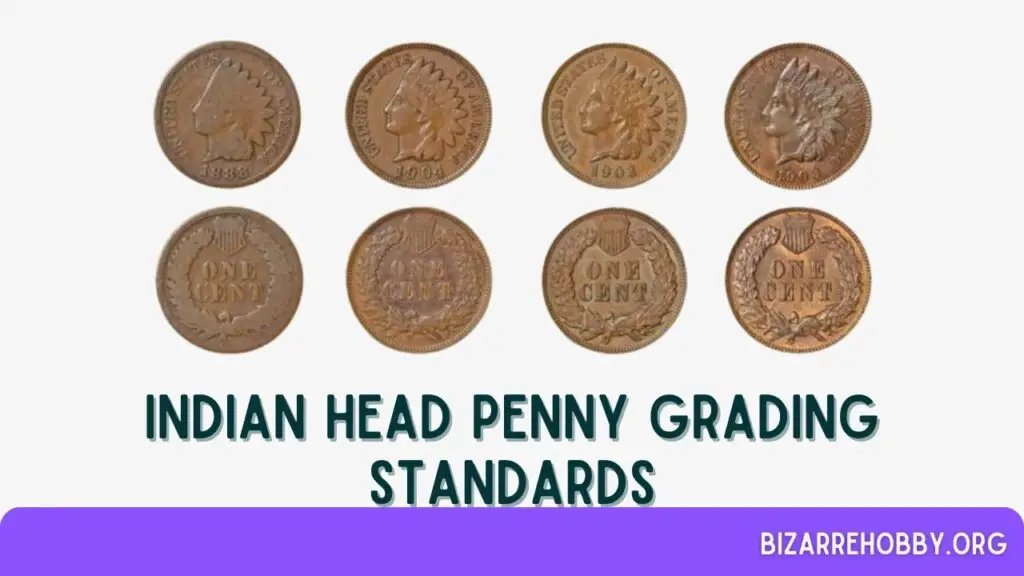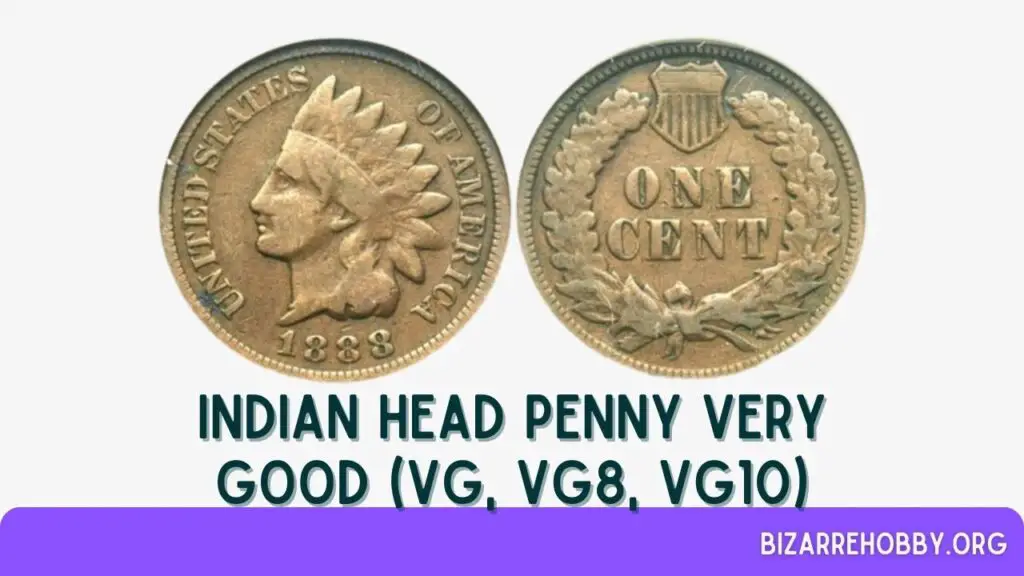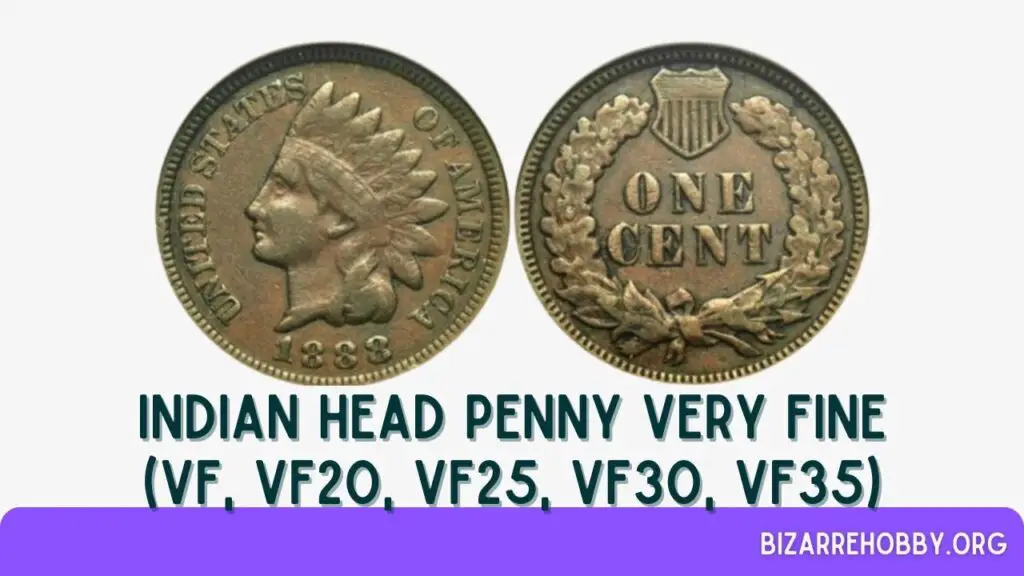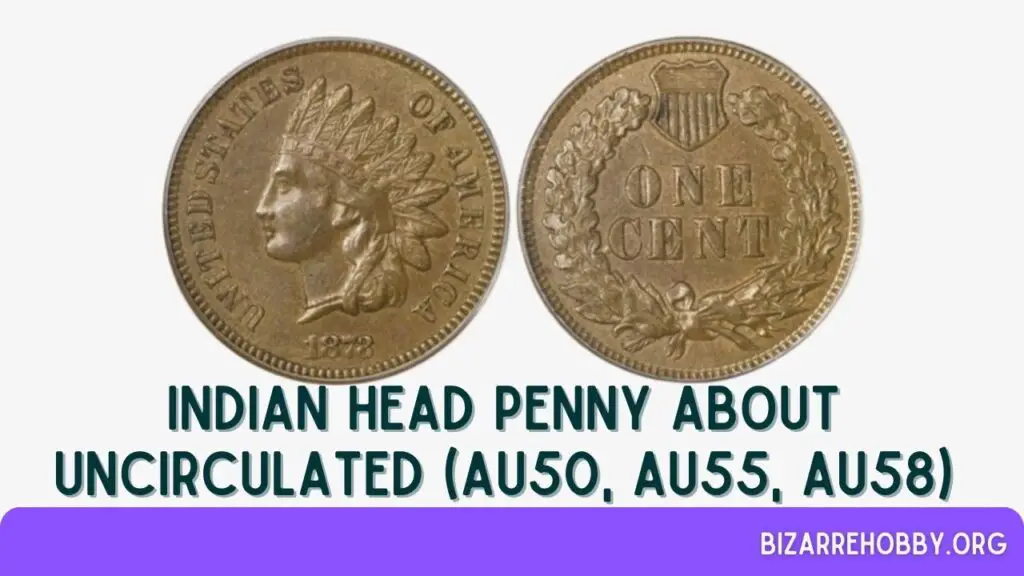Grading coins is an art that requires years of expertise to master, especially when it comes to accurately assessing the quality and value of Indian Head pennies. While you can follow guidelines to learn the basics of how to grade Indian head penny, achieving a high level of precision for premium pieces often necessitates professional evaluation.
To ensure you get the best possible price for your Indian Head penny at top-tier auctions, it’s advisable to have it graded by a professional service. Renowned companies like PCGS and NGC offer such services.
Table of Contents
Indian Head Penny Grading Standards

General ANA standards can be applied to coin grading, but specific descriptions for individual coins can vary due to design intricacies, relief height, and wear patterns. Therefore, it’s crucial to refer to the specific guidelines for the coin in question. Examine all visible details with the naked eye or a magnifying glass, and avoid rough estimations based on partial similarities.
Our grading guide utilizes the Sheldon Coin Grading Scale, a 70-point system widely used in numismatics to assess coin quality. This scale, developed by William Herbert Sheldon, forms the basis of the Official ANA Grading Standards.
| Sheldon Scale | Grade |
|---|---|
| 1 | Basal State-1 |
| 2 | Fair |
| 3 | Very Fair |
| 4, 5, 6 | Good |
| 7, 8, 10 | Very Good |
| 12, 15 | Fine |
| 20, 30 | Very Fine |
| 40 | Extremely Fine |
| 50 | About Uncirculated |
| 60 | Mint State |
| 65 | Mint State |
| 70 | Mint State |
Understanding Grades for Indian Head Penny
Indian Head pennies can be categorized into two types based on their composition and weight. Coins minted from 1859 to 1864 are heavier and contain a lower percentage of copper, with nickel included in their composition. Later coins, minted from 1864 to 1909, do not contain nickel.
The US Mint produced special patterns in 1858, and subsequent coins include both regular issues and proofs. Early coins have a slight silver hue due to the nickel content, which made them harder but also more challenging to strike crisply. This required greater striking pressure, leading to quicker die wear and breakage.
Later coins, made from a softer alloy, were easier to mint and more prone to attractive toning. These differences are important to consider when grading Indian Head pennies, especially those in mint state, as color significantly impacts their value. Red-toned coins are particularly valuable.
Graded coins in mint state are marked as follows:
- Year – Mint mark – Mint state – Color
For example:
- 1908 S MS 68 RD Indian Head penny (Red)
- 1908 S MS 68 RB Indian Head penny (Red-Brown)
- 1908 S MS 68 BN Indian Head penny (Brown)
Pay special attention to the highest design points when grading, as these areas are the first to show wear.
Indian Head Penny Details
| Specification | Detail |
|---|---|
| Face Value | One cent ($0.01) |
| Compound | Cupronickel alloy with 88% copper (1859 to 1864) |
| Cupronickel alloy with 95% copper (1864 to 1909) | |
| Coin Weight | 0.16 ounces (4.67 g) – from 1859 to 1864 |
| 0.11 ounces (3.11 g) – from 1864 to 1909 | |
| Coin Diameter | 0.75 inches (19.05 mm) |
| Coin Thickness | 0.09 inches (2.30 mm) |
How to Grade Indian Head Penny?
Indian Head pennies are a classic and beloved part of United States coinage. While many are available at reasonable prices, some collectors seek out rarities. Key dates to look for include:
- 1877 Red Cents
- 1908 S Red Cents
- 1909 S Red Cents
Although these coins are not exceedingly rare, red pieces in the highest grades can command unexpectedly high prices due to a combination of unique factors.
1. About Good (AG)

Coins in About Good (AG) condition are heavily worn and not typically sought after by collectors. These pennies have endured extensive circulation, resulting in significant surface wear and damage.
Obverse: Inscriptions are barely legible, and Liberty’s head is outlined without recognizable details. The lettering is smooth and sometimes merges with the rim, but the date remains identifiable.
Reverse: The design is so worn that the bow merges with the wreath, making it impossible to distinguish individual leaves. The denomination “ONE CENT” is flat but readable.
2. Good (G, G4, G6)

While collectors often avoid coins in Good (G) condition, Indian Head pennies in this grade can still be desirable due to their age and scarcity.
Obverse: The portrait is outlined, but fine details are missing. Hair and feathers are merged, and inscriptions and the date are intact but separated from the coin edge.
Reverse: The wreath is worn flat, making individual leaves indistinguishable. The bow and arrows merge into one outline, and most horizontal lines in the shield are missing.
3. Very Good (VG, VG8, VG10)

Coins in Very Good (VG) condition are well-worn but retain a clear design with defined key elements, though lacking fine details.
Obverse: The word “LIBERTY” on the headband is barely visible, with at least three letters recognizable. Despite heavy wear, the legends and date are still defined.
Reverse: Slight details of the wreath are visible, but the tops are worn smooth. The bow outline is barely noticeable, and ribbons are flat.
4. Fine (F, F12, F15)

Fine (F) graded pennies show moderate, even wear across the surface with clear, readable legends and date. These coins are often considered acceptable by collectors, especially those minted before 1880.
Obverse: The letters “LIBERTY” on the band must be visible and readable, though weak in spots. Hairline and forehead are separated, and feather bases are sharp. About one-quarter of the hair detail is visible, and the ribbon is smooth.
Reverse: Horizontal lines on the shield are visible, though some may be merged. The wreath has recognizable leaves, though flattened, and the bow knot and arrows are distinct.
5. Very Fine (VF, VF20, VF25, VF30, VF35)

Very Fine (VF) coins exhibit moderate wear and slight flatness on the highest design parts but remain attractive and collectible.
Obverse: The word “LIBERTY” has sharp letters, though worn. Half of the hair details are visible, with limited flat fields of wear on feather tips, hair ends, and ribbon.
Reverse: Wreath leaves, arrows, and bow are worn but detailed. Slight wear is visible on leaf tips, and the bow is slightly flat.
6. Extra Fine (EF40, EF45)

Extra Fine (EF) pennies show slight wear on the highest points, with well-defined design parts and recognizable, sharp details. Traces of mint luster may be present.
Obverse: “LIBERTY” should be complete with sharp letters. Feather tips are well-defined with minor wear. The diamond pattern on the ribbon is clear, with slight wear on the curl above the ear.
Reverse: The shield is clear with separated lines, and the bow is lightly worn. High leaf points are smooth, but wreath details are recognizable.
7. About Uncirculated (AU50, AU55, AU58)

About Uncirculated (AU) pennies have minor wear with slight abrasions on the highest points. Both surfaces are well-preserved with nearly complete mint luster.
Obverse: Slight wear is visible on the hair curl above Liberty’s ear and the lowest curl behind the ribbon. Inscriptions, feathers, and the diamond pattern on the ribbon are complete and appealing.
Reverse: Wear is visible on the bow knot and most leaves of the wreath, with significant changes at the design’s prominent peaks.
8. Mint State (MS60 to MS70)

Mint State (MS) pennies are the best-preserved, with no wear from circulation. These coins have recognizable mint luster and preserved details, though contact and bag marks may be present. They are highly collectible and often expensive.
Final Thoughts
Grading Indian Head pennies requires a keen eye and an understanding of the nuances that affect their value. By following the guidelines and considering the specific characteristics of each coin, you can accurately assess their condition and potential worth.
Whether you’re a seasoned collector or a novice, having your Indian Head Pennies professionally graded can ensure you receive the best possible value. Remember, the history and unique features of each penny make them a fascinating and rewarding addition to any collection.
